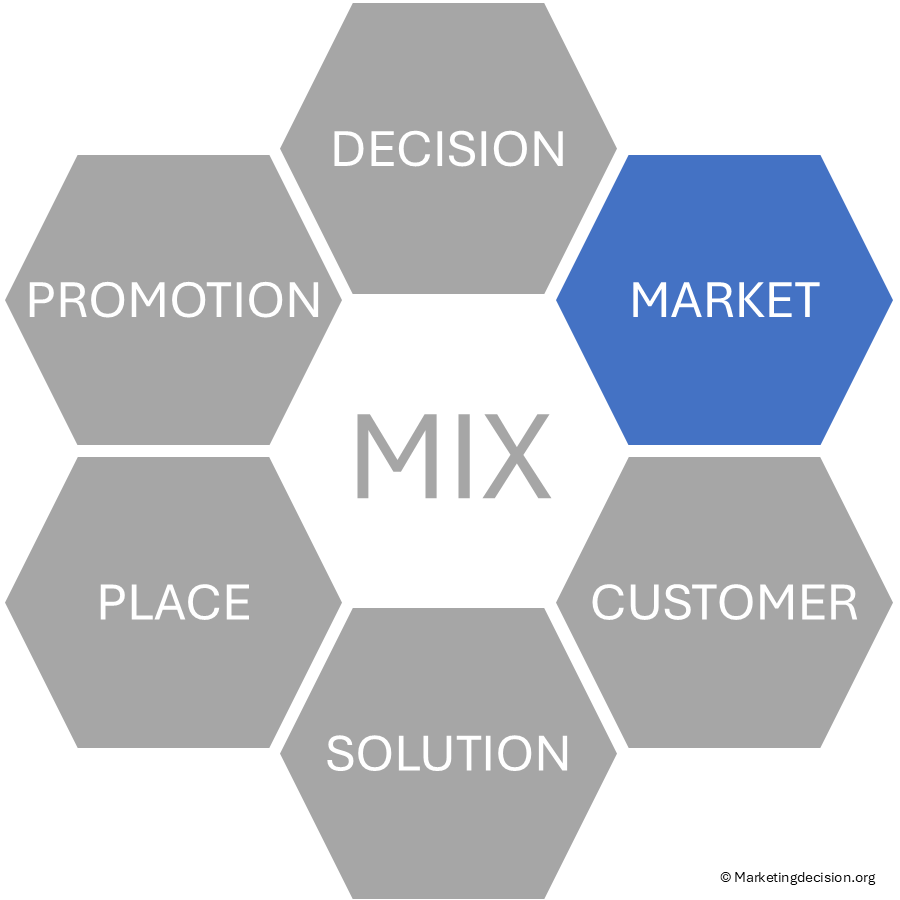
Explore how the Market Mix builds strategic understanding through tools that assess visibility, share, and presence—guiding smarter business decisions and long-term growth.
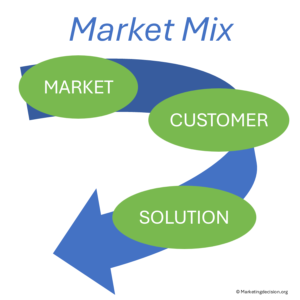
Market understanding plays a central role in the well-known marketing mix and forms the basis for strategic market understanding across the organization. It comes first—before developing offerings, defining pricing, or planning distribution. Understanding customers, their needs, and expectations is essential before building comprehensive solutions, selecting channels, and crafting effective go-to-market strategies.
Understanding the market environment is like laying the foundation of a building. When done well, it supports further analysis, enabling teams to identify growth opportunities, assess risks, and deploy the marketing mix model effectively.
This process is continuous and cyclical. It requires regular reviews and reinforcement of these foundations. A company that maintains a clear view of its market remains more alert, captures opportunities faster, and invests resources more effectively for sustainable growth.
Understanding the market is not merely a destination—it’s a journey. It is not the end, but a vital means to reach it. The essence of market understanding lies in its ability to provide answers to both short-term and long-term business questions.
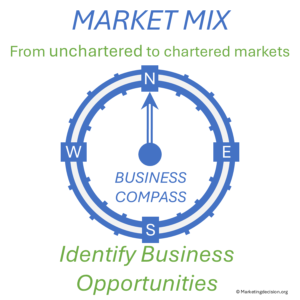 Your path to success is paved with numerous questions, and market understanding plays a pivotal role in each of them:
Your path to success is paved with numerous questions, and market understanding plays a pivotal role in each of them:
In essence, the Market Mix anchors business strategy in market reality—keeping focus sharp and decisions informed. It empowers data-driven market decisions and transforms insights into concrete action plans that guide sustainable business growth.
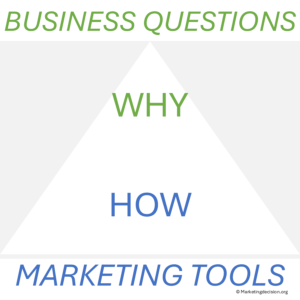 The real value of market analysis tools lies in the business questions they help address. Aligning tools with business needs ensures their proper and impactful use. Without clear questions, even the best tools risk becoming mechanical exercises that produce data but little insight.
The real value of market analysis tools lies in the business questions they help address. Aligning tools with business needs ensures their proper and impactful use. Without clear questions, even the best tools risk becoming mechanical exercises that produce data but little insight.
Effective market understanding begins by asking:
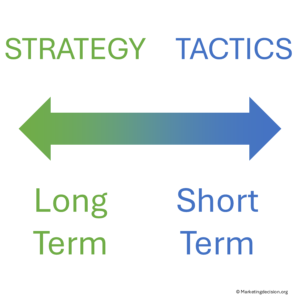
These questions transform data into direction—turning information into meaningful action and fostering alignment across teams. When used consistently, they also strengthen market knowledge integration across departments, ensuring that every decision reflects shared market intelligence.
Consider business meetings as opportunities to shape rich and purposeful questions that guide the entire organization in defining its objectives. When teams contribute to identifying what truly matters, they not only strengthen market understanding but also build a shared sense of ownership and curiosity.
A company culture rooted in meaningful questioning becomes a true differentiator—one that focuses collective attention on the most relevant market challenges and turns insights into coordinated strategic action.
 Market understanding is not a one-time activity; it is a strategic discipline that requires consistency and structure. This discipline is the cornerstone of excellence in market understanding and the practical use of market analysis tools to interpret evolving business environments. It relies on processes that encourage observation, comparison, and reflection across functions.
Market understanding is not a one-time activity; it is a strategic discipline that requires consistency and structure. This discipline is the cornerstone of excellence in market understanding and the practical use of market analysis tools to interpret evolving business environments. It relies on processes that encourage observation, comparison, and reflection across functions.
By maintaining a strong external focus, teams can detect early signs of change, identify new opportunities, and respond swiftly to shifts in customer behavior or competitive dynamics.
When this discipline becomes embedded in daily work, it shapes decision-making at every level—creating the mindset that defines a true culture of excellence in market understanding.
Understanding a market is one thing; acting on that understanding is another. The following Market Mix tools help transform analysis into decisions that drive growth. These market analysis tools facilitates turning market insights and foresight into strategy, enabling teams to make data-driven market decisions that strengthen competitive positioning. Each provides a structured perspective for interpreting market signals and converting them into opportunity.
Market Visibility
Gain clarity on how visible your company is within the total market and where potential growth lies.
Market Share & Winds
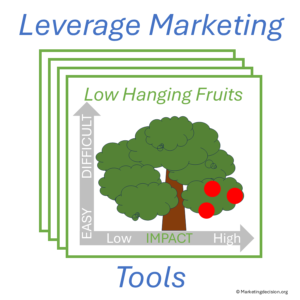
Identify which factors push your growth forward or hold it back. Understanding segment tailwinds and headwinds helps refine strategy and anticipate performance trends.
Market Waterfall
Follow the progression from total market potential to actual orders. This structured view helps reveal conversion gaps, assess efficiency, and guide next actions.
Market Presence (BCG & GE Matrix)
Portfolio analysis highlights where you win, where you compete, and where to invest next. These strategic tools help prioritize markets and strengthen competitive positioning.
Market PESTLE Analysis
Take a 360° view of your business environment by examining Political, Economic, Social, Technological, Legal, and Environmental factors.
Porter’s Five Forces
Understand where competitive pressure originates. Porter’s model helps analyze rivalry, supplier and buyer power, and potential threats, ensuring your strategy remains resilient.
Market Forecast and Scenario Planning
Pair reliable forecasting with scenario thinking to anticipate change and prepare your next move. Together, they build flexibility into your strategy and improve decision quality.
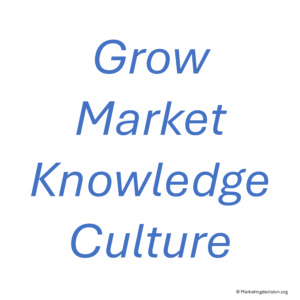 Creating a culture of excellence in market understanding is essential for sustaining an external focus. Teams should feel confident sharing market insights—whether positive or negative, preliminary or confirmed.
Creating a culture of excellence in market understanding is essential for sustaining an external focus. Teams should feel confident sharing market insights—whether positive or negative, preliminary or confirmed.
Early detection of market signals enables faster and more effective responses. For instance, when sales teams communicate lost deals early, it helps prevent recurring issues and identifies opportunities for improvement.
When engaging external research partners, ensure they deliver new insights your teams cannot gather internally. Avoid overreliance on internal feedback alone—diverse perspectives strengthen understanding and drive better strategic decisions.
A culture of excellence in market understanding encourages curiosity, accountability, and collaboration. It ensures that market intelligence is not an isolated function but a shared responsibility across all teams. Embedding this mindset into company routines promotes strategic market understanding—ensuring that market insights continuously inform planning, execution, and growth initiatives.
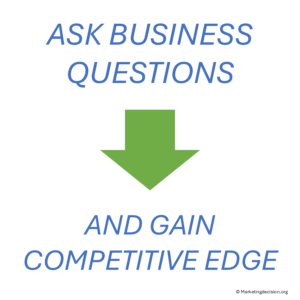 Understanding the market environment is the foundation of effective marketing work. It anchors marketing plans, go-to-market strategies, and long-term business success. Organizations that invest in strategic market understanding and the systematic use of market analysis tools maintain stronger alignment between market reality and strategic intent.
Understanding the market environment is the foundation of effective marketing work. It anchors marketing plans, go-to-market strategies, and long-term business success. Organizations that invest in strategic market understanding and the systematic use of market analysis tools maintain stronger alignment between market reality and strategic intent.
Regularly updating market assessments with contributions from cross-functional teams reinforces external focus and responsiveness to change. This ongoing engagement ensures teams remain alert to subtle market signals, supporting faster adaptation and stronger competitiveness.
Your feedback and specific needs are greatly valued. Feel free to reach out to us at contact@marketingdecision.org if you have any questions, special requirements, or recommendations.
The Market Mix is a strategic compass for understanding the market environment. It connects external analysis with business decisions, helping teams navigate uncertainty and align around a shared view of market opportunities, risks, and competitive dynamics.
It begins with the right business questions—those that explore where growth lies, which investments matter most, and how customer needs evolve. These questions turn analysis into purpose and ensure that market insights directly support business priorities.
The Market Mix helps organizations shape collective business understanding, strengthen alignment across teams, and make sound, agreed, and shared decisions. It turns fragmented data into actionable insights that guide strategic direction and long-term growth.
Because it requires structure, consistency, and an external focus. Maintaining a regular cadence of discussions, reviews, and market-oriented business meetings keeps organizations alert and adaptive. This discipline ensures that decisions remain grounded in reality, not assumptions.
Key market analysis tools include Market Visibility, Market Share & Winds, Market Waterfall, Market Presence (BCG & GE Matrix), PESTLE Analysis, Porter’s Five Forces, and Market Forecast & Scenario Planning.
Each serves a unique purpose—from reading market signals to assessing competitiveness and planning investments.
Start from the business questions rather than the tool. For example, use Market Visibility to assess position, Market Forecast to project growth, or Scenario Planning to explore alternatives. Each method provides a structured lens to support the question you’re trying to answer.
Because analysis without context leads nowhere. Effective market understanding means continuously linking insights to business needs and decisions—ensuring strategies remain relevant, evidence-based, and grounded in real market conditions.
© marketingdecision.org
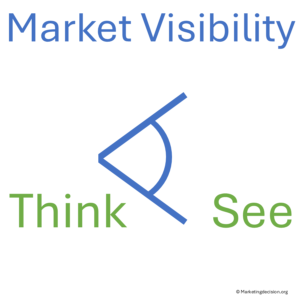 Effective communication and analysis of market trends and company performance is crucial for informed decision-making. For instance identifying growth opportunities is only possible if a good understanding of market trends and competitors presence is built over time, with teams confident with the data.
Effective communication and analysis of market trends and company performance is crucial for informed decision-making. For instance identifying growth opportunities is only possible if a good understanding of market trends and competitors presence is built over time, with teams confident with the data.
Understanding market trends and assessing performance provides valuable insights into overall business activities and competitive dynamics. Indeed, a comprehensive review of market hypotheses, forecasts, and their alignment with the actual business environment is at the heart of marketing.
Key benefits expected:
Understanding the dynamics of market segments is crucial for any business. The market is typically composed of various segments such as customer segments, distribution channels, and product categories. These segments can experience growth or decline over time, resulting in a market mix effect.
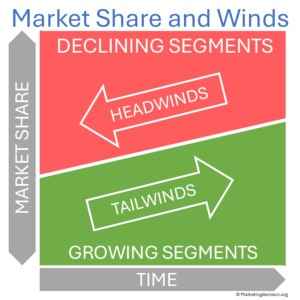 What is the market mix effect and why it is important?
What is the market mix effect and why it is important?
When a company is positioned in segments that are declining, it may find that despite gaining share within those segments, it is actually losing overall market share. In that situation, imagine a sales manager compensated on market share gain. The head of a total region with declining share will see a lower sales compensation, when all directors of branches or regions would have increased sales compensations.
The reverse can also happen, that is a company positioned on growing segments may win share in total even with mitigated performance on those segments.
It becomes crucial to assess the impact of geographic or other segment-specific factors on overall market share gains and understand how to take advantage of existing backwinds.
Are we truly aware of the entire market landscape? Are we effectively targeting all relevant segments? Do we seize every opportunity that arises? Understanding our market visibility and presence is crucial for maximizing market penetration and making informed business decisions. Engaging in discussions around visibility and market presence with Sales and Marketing teams is essential to assess performance and identify areas for improvement.
 The Market Waterfall provides a comprehensive view of the market journey, from the total market perspective down to what is successfully captured at each step. This tool is particularly beneficial when working through distributors, as it allows for independent data collection and analysis. It offers key insights to facilitate discussions on market presence and visibility.
The Market Waterfall provides a comprehensive view of the market journey, from the total market perspective down to what is successfully captured at each step. This tool is particularly beneficial when working through distributors, as it allows for independent data collection and analysis. It offers key insights to facilitate discussions on market presence and visibility.
For organizations with a direct salesforce, the Market Waterfall provides an opportunity to evaluate performance against expectations, assess CRM utilization for visibility, analyze sales coverage, expertise, and alignment with market opportunities. In these discussions, it is crucial to involve both Sales and Marketing teams to foster collaboration and alignment.
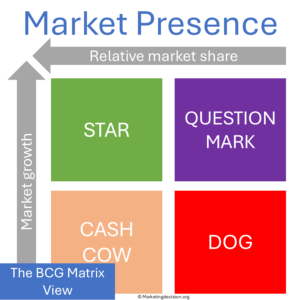 In the realm of market analysis, there are renowned tools and methods developed by companies like BCG and General Electric that focus on evaluating a company’s presence across various segments. These tools leverage market growth, market share, and other relevant information to provide insights into the company’s positioning.
In the realm of market analysis, there are renowned tools and methods developed by companies like BCG and General Electric that focus on evaluating a company’s presence across various segments. These tools leverage market growth, market share, and other relevant information to provide insights into the company’s positioning.
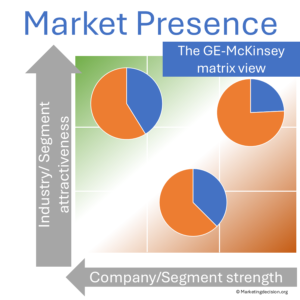 However, it is crucial to consistently question and assess the notion of “presence.” Is the company actively engaged in growing market segments? Are investments being made in the right areas? Where should marketing communication and promotion costs be allocated for optimal results?
However, it is crucial to consistently question and assess the notion of “presence.” Is the company actively engaged in growing market segments? Are investments being made in the right areas? Where should marketing communication and promotion costs be allocated for optimal results?
While these tools may appear highly strategic, catering to long-term perspectives, they also serve as invaluable aids in facilitating discussions and enhancing visibility within a business context.
PESTLE analysis is a powerful tool, akin to Porter’s Five Forces, that facilitates a comprehensive understanding of the market. This understanding becomes crucial when designing a business plan or considering the development of a new product.  PESTLE analysis enables a 360° view of the market by considering six key dimensions: Political, Economic, Social, Technological, Legal, Environmental.
PESTLE analysis enables a 360° view of the market by considering six key dimensions: Political, Economic, Social, Technological, Legal, Environmental.
Those are described in this reference article from Wikipedia: https://en.wikipedia.org/wiki/PEST_analysis
By leveraging both external and internal knowledge, organizations can harness a better understanding of the challenges and opportunities that lie ahead.
It is crucial to initiate a discussion on the market environment before diving into specific opportunities. Focusing solely on a single topic during a business review, while neglecting the broader landscape, poses significant risks. By identifying and managing multiple opportunities (not to mention risks), organizations can ensure comprehensive and effective decision-making.
The Porter’s Five Forces model is a powerful tool for analyzing competition and addressing strengths and weaknesses within a market. It helps to understand the dynamics among market players. The model consists of three forces related to direct competition: the threat of competitive rivalry, the threat of new entrants, and the threat of substitute products. Additionally, it considers the bargaining power of suppliers and customers as two additional forces.
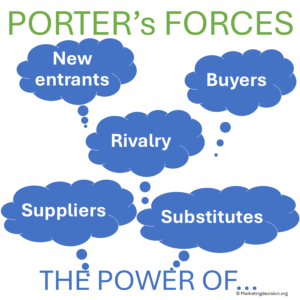 Why use 5 forces Porter model?
Why use 5 forces Porter model?
Despite its simplicity, the model is surprisingly effective. The Porter’s Five Forces model is valuable for assessing a company’s relative position compared to its competition. It allows businesses to mitigate direct threats and evaluate potential opportunities. The model is particularly useful when considering direct competition and can provide insights into shared perceptions of risks and opportunities within the industry.
While the model may appear simple, its strength lies in its ability to encompass various types of competition. Rather than concentrating solely on the most visible competitors, Porter’s Five Forces encourage a broader perspective of the competitive landscape. Instead of fixating on a single tree that obscures the forest, this approach allows for a comprehensive analysis of competition, encompassing various threats and paving the way for a thorough evaluation of new opportunities.
 Developing a precise, documented, and agreed-upon forecast is a crucial marketing action. When done well, it supports aligned and effective activities across all functions. However, poor quality and lack of trust in the forecast can become a headache, leading to underperformance in a market that is growing faster than anticipated, with sales and other functions struggling to adapt to the changing environment.
Developing a precise, documented, and agreed-upon forecast is a crucial marketing action. When done well, it supports aligned and effective activities across all functions. However, poor quality and lack of trust in the forecast can become a headache, leading to underperformance in a market that is growing faster than anticipated, with sales and other functions struggling to adapt to the changing environment.
Forecasting lies at the heart of many business decisions, but it is neither the beginning nor the end. It is part of the effort to optimize investment decisions, from technology and product development to marketing budget allocation, sales organization, and sales compensation plans.
Accurate market forecasting requires a collective effort, a continuous process, and clear ownership and roles. It involves both qualitative and quantitative approaches to understand market dynamics and make informed projections.
By implementing a strong forecasting culture and utilizing appropriate tools, businesses can enhance decision-making processes and gain a competitive advantage in the market.
Building a detailed forecast and basing a business plan solely on it can create a false sense of confidence in the final outcome. Forecasts, while appearing solid and reliable, are often unreliable predictions. Market events can occur unexpectedly, potentially rendering a well-crafted business plan obsolete. This is where scenario planning comes into play, helping organizations consider alternative situations and evaluate necessary adjustments to the business plan.  A scenario represents a well-defined set of market conditions and events that may occur with notable impact.
A scenario represents a well-defined set of market conditions and events that may occur with notable impact.
The objective of scenario planning is to understand how the business plan should be revised to address specific scenarios. The aim is to make the business plan more efficient, adaptive, and capable of managing risks and seizing opportunities. By integrating scenario planning, organizations can fortify their business plans and enhance preparedness for a changing market environment.
By embracing scenario planning, organizations gain the ability to develop alternative business plans, refine their strategic actions, and respond swiftly to unexpected market circumstances. Early adoption of scenario planning facilitates more fluid and simplified forecasting, enabling the discussion and refinement of alternate scenarios as the business plan progresses. Ultimately, scenario planning enhances agility, resilience, and readiness in an ever-changing business landscape.
Technology operates in cycles, where new advancements supersede old ones. Demonstrating how technology investments can impact you or your competitors is crucial.
Explore these articles for more:
Wikipedia: Technology Adoption Life Cycle: https://en.wikipedia.org/wiki/Technology_adoption_life_cycle
Business-to-You: Crossing the Chasm – Technology Adoption Life Cycle: https://www.business-to-you.com/crossing-the-chasm-technology-adoption-life-cycle/
Innovations can profoundly reshape the market, especially when your company’s target customer segments (or areas where your company excels) are early adopters of a technology introduced by the competition. On the other hand, introducing a new technology to receptive customers can significantly enhance penetration and reputation. Mastering technological innovation is paramount.

This website focuses on the marketing mix and its key decision areas. Each category includes links to detailed methods, with some offering related tools available for purchase in our webshop. For easy navigation, use the main menu in the header to explore the marketing mix framework and methods. To go directly to the webshop, select the Shop menu in the header or click the link below. You can also browse by category.
© 2025 MARKETING DECISION SOLUTIONS. All Rights Reserved.